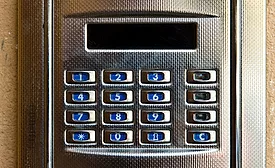Access Management
Security News -- Access Control
New $6.2 Million Security Gate Under Construction at Shipyard
August 7, 2012
Access Control -- Hackers
Hacker Will Expose Potential Flaw in Four Million Hotel Room Locks
July 24, 2012
Sign-up to receive top management & result-driven techniques in the industry.
Join over 20,000+ industry leaders who receive our premium content.
SIGN UP TODAY!Copyright ©2025. All Rights Reserved BNP Media.
Design, CMS, Hosting & Web Development :: ePublishing
